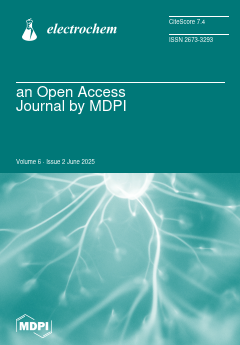In the past ten years, many coal mines have encountered the problem of a premature failure of anchor rod materials. Through field investigation and laboratory research, it was found that the premature failure of these bolt materials is mostly caused by mine water corrosion. In this paper, a Zn-Y
2O
3-Al
2O
3 composite coating was prepared by an electrodeposition method for the corrosion protection of underground anchors. Through the single-factor experiment method, the co-deposition process of Zn
2+ nano-Y
2O
3 and nano-Al
2O
3 particles was studied. Microhardness was used as the index to determine the optimum preparation process for the composite coatings. Combined with FSEM and XRD tests, the results showed that the synergistic effect of nano-Y
2O
3 and nano-Al
2O
3 particles made the coating grain refined and reduced the coating defects. The hardness of the coating increased from 98.7 Hv to 347.9 Hv, and the hardness and wear resistance of the coating were improved. The hydrophobicity of the Zn-Y
2O
3-Al
2O
3 composite coating was improved, and its static contact angle was 93.28°. The corrosion resistance of the composite coating was studied through electrochemical impedance spectroscopy, the Tafel curve, corrosion morphology, and weight loss. Under the synergistic effect of nano-Y
2O
3 and nano-Al
2O
3 particles, the self-corrosion current density decreased from 4.21 × 10
−4 A/cm
2 to 1.06 × 10
−5 A/cm
2, which confirmed that the Zn-Y
2O
3-Al
2O
3 composite coating had better corrosion resistance and durability. After soaking in mine water for 63 days, the Zn-Y
2O
3-Al
2O
3 composite coating had no obvious shedding on the surface and was well preserved. The practical application results show that it has excellent corrosion resistance and durability. The Zn-Y
2O
3-Al
2O
3 nano-composite coating material has significant potential advantages in the field of corrosion resistance of underground anchor rods.
Full article




